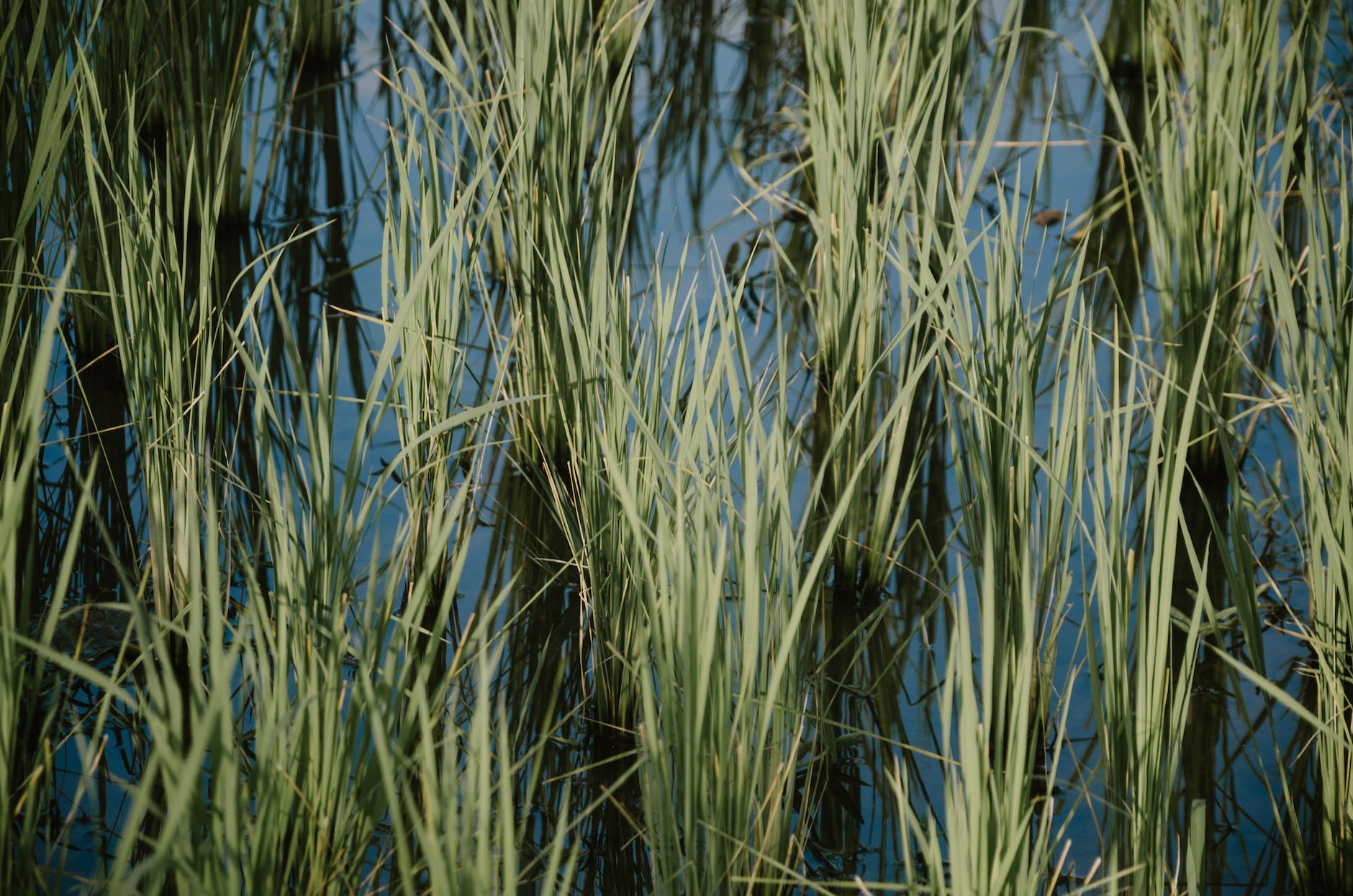I still think of that little poem I was taught in botany classes:
“Sedges have edges, rushes are round, grasses have nodes from the top to the ground.”
The easiest way to tell the difference between grasses and sedges are their stem structure and shape. Grasses have hallow, round stems, and nodes along them, which are little bumps that look almost like knuckles on the joints. Sedges, however, always have solid stems that tend to be triangular-shaped. Hence, the edges in sedges vs no edges in grasses.
The stems of rushes, like grasses, are round. However, they are filled with a spongy pithe and not hallow.
Below are the botanical names for these similar families:
Grass family – Poaceae
Sedge family – Cyperaceae
Rush family – Juncaceae


All of these families are monocots, meaning they have one seed leaf. Many of the crops we use and eat on a daily basis belong to the grass family: rice, corn, wheat, and other grains. Bamboo is a grass as well. The stems and leaves of many species of rushes have been used by indigenous peoples throughout the world for weaving and insulation. The common rush is used today to weave tatami mats. Some species of sedge you might recognize are the water chestnut and papyrus. Many grasses and sedges are used as ornamental plants as well. All three of these plant families are important for humans!

